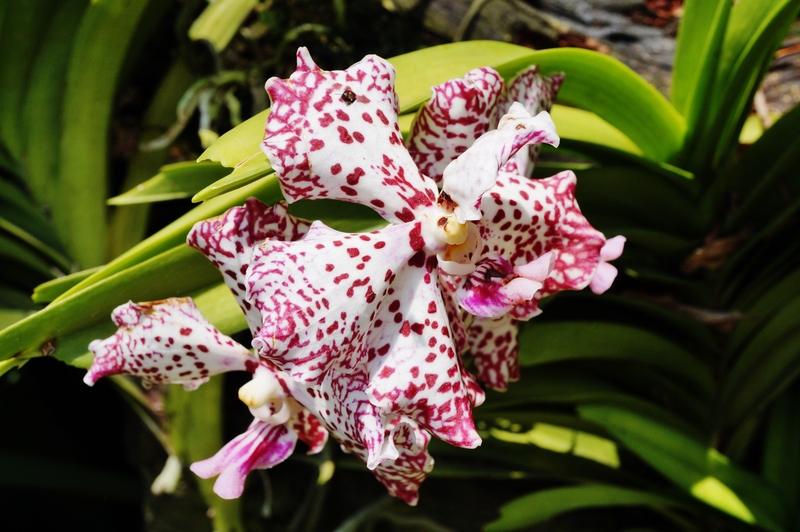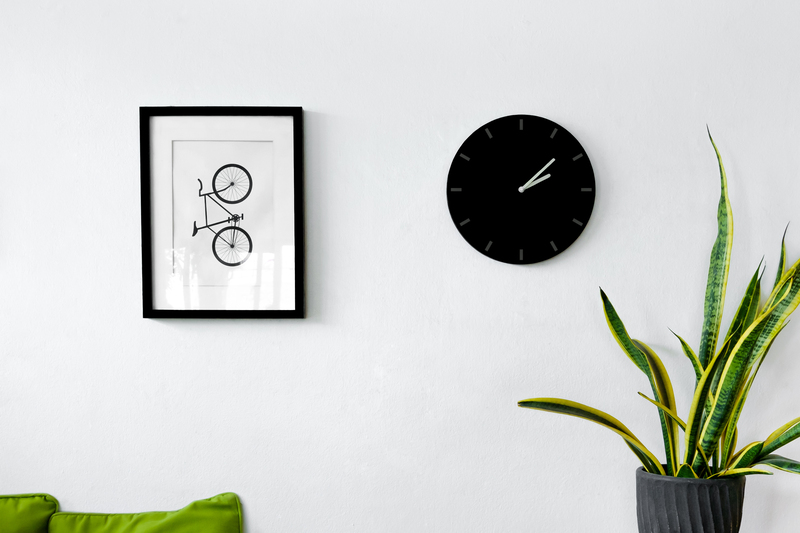Master the essentials of container gardening techniques
Posted on 25/06/2025
Are you limited by space but dream of lush greenery, colorful blooms, and a productive vegetable patch? Container gardening is the perfect solution, offering flexibility, creativity, and the ability to garden anywhere. Whether you're a city dweller with a small balcony, a suburban homeowner with limited yard space, or simply looking for unique gardening opportunities, mastering container gardening essentials can transform any area into a flourishing sanctuary.
What is Container Gardening?
Container gardening refers to growing plants exclusively in pots, tubs, hanging baskets, or other vessels rather than directly in the ground. This allows you to tailor your plant selection to your space, light availability, and aesthetic preferences. It's ideal for urban balconies, patios, indoors, or areas with poor soil. Container gardening techniques enable even novice gardeners to grow flowers, herbs, fruits, and vegetables without the hassle of traditional garden beds.

Why Choose Container Gardening?
Container gardening techniques provide numerous benefits:
- Flexibility: Move your plants to follow the sun, shade, or weather.
- Space Saving: Grow more in limited spaces like balconies and patios.
- Pest and Disease Control: Isolate plants to prevent the spread of pests and diseases.
- Year-Round Gardening: Bring containers indoors for continued growth in colder weather.
- Creative Expression: Use a variety of pots and arrangements for decorative flair.
- Control Over Soil: Select precise soil mixes for different plants and avoid poor native soil.
Essential Container Gardening Techniques to Master
To succeed in container gardening, you need to understand some core strategies. Here's how to master the fundamentals step by step:
1. Selecting the Right Containers
Not all containers are created equal. Choosing the appropriate vessel can make or break your gardening experience. Consider these key aspects:
- Material: Pots come in plastic, ceramic, terracotta, metal, wood, and fabric. Each has its pros and cons. For instance, plastic retains moisture longer but can heat up quickly, while terracotta is porous and breathable, ideal for plants that dislike "wet feet."
- Size and Shape: Ensure your container is large enough for plant roots. Deeper pots are necessary for root crops, while shallow dishes work for succulents.
- Drainage: Drainage holes are essential. Poor drainage causes root rot and plant stress. If needed, drill holes in the base.
- Color: Dark colors heat up quickly in the sun, which may stress some plants.
2. Using Proper Potting Mixes
Soil in containers should be loose, well-draining, and nutrient-rich. The best potting mixes for container gardening are designed to provide:
- Good Drainage: Prevents waterlogging and root problems.
- Nutrient Content: Supports healthy growth; look for mixes with compost or added fertilizer.
- Water Retention: Quality mixes retain moisture while still allowing excess water to flow away.
Avoid using ordinary garden soil in pots. It often compacts easily, restricting root growth and leading to poor aeration and drainage. Consider blending peat moss, perlite, coconut coir, and vermiculite to optimize the physical properties of your container soil.
3. Choosing Suitable Plants for Containers
Almost any plant can thrive in a container if its needs are met. But, some thrive better than others in confined spaces. Consider these popular container plants:
- Flowers: Petunias, pansies, geraniums, marigolds, begonias, and impatiens.
- Herbs: Basil, thyme, rosemary, mint, parsley, chives, and cilantro.
- Vegetables: Lettuce, cherry tomatoes, peppers, radishes, bush beans, and spinach.
- Fruits: Strawberries, blueberries in large pots, dwarf lemons or figs.
- Ornamental grasses and succulents: For variety and drought-resistance.
Match the plant's size, light, and water requirements to each container, and be mindful of mixing plants with similar care needs if you're designing a mixed arrangement.
4. Arranging Plants Creatively
One of the joys of container gardening is designing eye-catching displays. Follow the classic "thriller, filler, spiller" rule:
- Thriller: One or more tall, bold plants for height (eg. ornamental grasses, canna lilies).
- Filler: Mounded or bushy plants that fill in the middle space (eg. geraniums, petunias).
- Spiller: Trailing plants that spill over the pot edge (eg. ivy, sweet potato vine).
Arrange plants by height and texture to create visual appeal, and don't be afraid to experiment with colors and foliage types.
5. Watering Wisely
Watering is the most crucial aspect of container gardening maintenance. Unlike garden beds, containers dry out quickly.
- Frequency: Monitor daily, especially in hot weather. Early morning is best for watering.
- Technique: Water deeply until it drains from the bottom to ensure roots are reached.
- Avoid Waterlogging: Empty saucers after watering to prevent mold and root rot.
- Mulching: Add a thin layer of mulch or pebbles to slow evaporation and keep roots cool.
Self-watering containers or drip irrigation systems can help busy gardeners maintain consistent moisture levels.
6. Fertilizing for Healthy Growth
Plants in containers rely on you for nutrients, as waterings gradually leach soil fertility away. Here are some tips for proper container fertilization:
- Slow-release granules: Mix into the soil at planting for ongoing nourishment.
- Liquid fertilizers: Feed every 2-4 weeks during active growth. Organic options like fish emulsion or seaweed extract are ideal for edibles.
- Monitor needs: Look for pale leaves or slow growth as signs of nutrient deficiency.
Be careful not to over-fertilize, which can burn plant roots and harm microbial life.
7. Providing the Right Light
Container plants require adequate sunlight for optimal growth. Check plant tags or seed packets for light requirements:
- Full sun: At least 6-8 hours of direct sunlight per day. Best for most vegetables and sun-loving flowers.
- Partial shade: 3-6 hours of morning or filtered sunlight. Great for greens and shade-tolerant ornamentals.
- Shade: Less than 3 hours of direct sun; suitable for ferns, impatiens, and certain herbs.
Using containers allows you to move plants as the sun's position changes through the seasons, maximizing light exposure.
Advanced Container Gardening Techniques
1. Vertical Gardening with Containers
Maximize your growing space by going vertical! Use stackable pots, wall-mounted planters, trellises, or hanging baskets to grow upwards:
- Vining plants: Grow cucumbers, peas, or pole beans on trellises.
- Wall gardens: Use pocket planters or towers for compact herbs and flowers.
- Hanging baskets: Ideal for strawberries, trailing flowers, or cherry tomatoes.
2. Companion Planting in Containers
Boost plant health and harvests by combining compatible species in one container:
- Tomatoes basil (improves flavor, deters pests).
- Carrots onions (repels carrot flies).
- Marigolds vegetables (natural pest repellents).
Mixing species with similar water and light needs creates harmonious mini-ecosystems on your patio or balcony.
3. Container Gardening for Specific Needs
Try container gardening techniques tailored for:
- Edibles only: Dedicated vegetable or herb containers, ensuring food safety by using food-safe planters and soil.
- Indoor gardening: Grow houseplants or edibles like microgreens near windows or under grow lights.
- Pollinator-friendly spaces: Plant nectar-rich flowers such as lavender, salvia, or zinnias to attract bees and butterflies.
- Children: Involve kids with easy-to-grow plants such as radishes, nasturtiums, or strawberries.
Choose non-toxic plants and sharp-free containers for safe, accessible gardening.
Common Container Gardening Problems and Solutions
Even the most experienced gardeners face challenges. Here are quick fixes to common container issues:
- Yellowing Leaves: Often a sign of overwatering, poor drainage, or nutrient deficiency. Check the potting mix, adjust watering, and fertilize.
- Root-bound Plants: When roots outgrow their pots, growth is stunted. Repot into larger containers, trimming roots as needed.
- Pests: Keep an eye out for aphids, spider mites, or whiteflies. Use neem oil, insecticidal soap, or introduce beneficial insects.
- Wilting Despite Moist Soil: Roots could be drowning due to poor drainage. Repot the plant into a container with better drainage.
- Stunted Growth: Could be due to lack of light, depleted soil nutrients, or container size. Reevaluate plant placement, soil, and pot size.
Design Tips for Beautiful Container Gardens
- Choose a Color Palette: Base your selections on complementary or contrasting hues for harmony or drama.
- Vary Heights and Textures: Combine tall, bushy, and trailing plants with different leaf shapes for visual interest.
- Group Containers: Cluster containers in odd numbers for a natural look; vary pot sizes and shapes.
- Use Standout Planters: Statement pots or decorative urns can become artful focal points.
- Change with the Seasons: Refresh displays with seasonal flowers, evergreens, or ornamental branches for year-round beauty.

Container Garden Maintenance Calendar
Stay organized with this basic maintenance schedule:
- Spring: Clean containers, refresh soil mix, plant new seeds or starts.
- Summer: Water daily, feed regularly, and deadhead spent flowers for continued blooming.
- Autumn: Replace annuals with cold-tolerant plants, bring tender species indoors.
- Winter: Minimize watering, insulate pots, and check for pests indoors.
Conclusion: Cultivate Success by Mastering Container Gardening Techniques
Container gardening is more than a solution for small spaces--it's a creative, rewarding way to nurture beauty and nutrition wherever you live. By mastering the essentials--selecting the right containers, using high-quality soil mixes, choosing suitable plants, and providing proper care--you'll transform patios, windowsills, and balconies into vibrant gardens.
Remember to observe, experiment, and enjoy the process. Whether you grow vibrant blooms or bountiful vegetables, container gardening techniques empower you to garden your way, anywhere!
Ready to start your container gardening journey? Gather some pots, pick your favorite plants, and let your creativity thrive!

